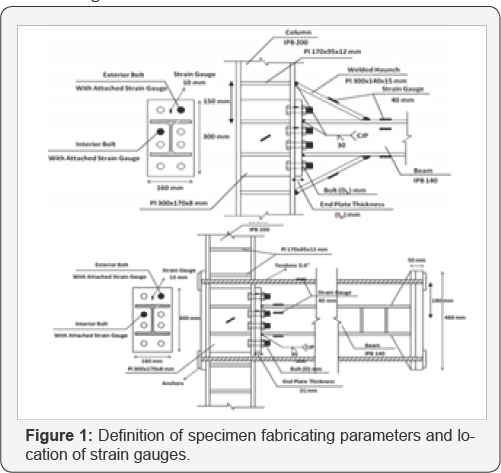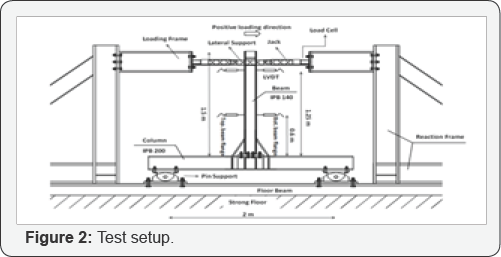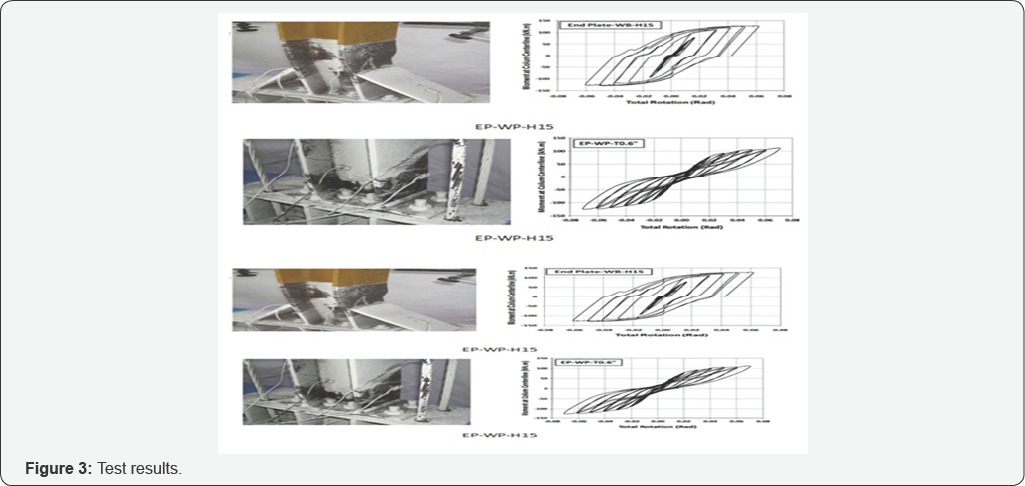Seismic Strengthening of Weak Bolted End plate Connections- Juniper Publishers
Juniper Publishers- Journal of Civil Engineering
Abstract
Bolted steel connections have been frequently used
after Northridge earthquake. Strengthening of these connections without
the need for changing or replacing their components is a problem that
has been recently considered by engineers. This study develops and
experimentally validates an innovative technique for enhancing the
seismic performance of steel beam to column moment connections. The use
of haunches or post-tensioned tendons as a way to rehabilitate end plate
bolted connections with weak end plate is studied constructing 4
experimental specimens of corner connections under SAC cyclic loading
protocol. The results of the study show that this strengthening method
improves the cyclic behavior of the weak connections. Besides, it
provides specimens with better performance than that of the reference
connection designed according to AISC.
Keywords: Rehabilitation; Cyclic behavior; Bolted connections; Welded haunch; Post tensioned tendons; End plate
Introduction
Steel connections are critical structural elements
that transfer the floor load to beams and columns. This is due to the
important role they in maintaining the overall stability of steel
structures. Among the concerns regarding the poor performance of weak
connections is the ability to effectively and economically rehabilitate
steel moment connections in existing buildings. In the followings, some
investigations about the connections and strengthening ways are
reviewed. Asada et al. [1]
proposed a method to improve plastic deformation capacity of the welded
wide flange beam-to-column connections in existing steel buildings by
using supplemental H-section haunches jointed by high-strength bolts and
welding which expected to secure construction quality. Saberi et al. [2-4]
have explored comparison of bolted end plate and T-stub connection
sensitivity to component thickness and bolt diameter on cyclic behavior.
Behavior of post-tensioned connections with stiffened angles under
cyclic loading is studied by Shiravand et al. [5].
Test Specimens
In this paper, four end-plate bolted beam-to-column
connections are tested. The beam profile in all specimens is IPB140 with
1.5m length and the column profile is IPB200 with length of 2m. A
reference specimen called EP-R (End Plate Reference) is designed based
on AISC [6]
and constructed. One weak connection specimens is also constructed.
This specimen has weak end plate EP-WP. To evaluate the cyclic behavior
of the retrofitted connections using the proposed method, this weak
specimen is fabricated again and retrofitted by adding post tensioned
tendons EP-WP-T0.6” and retrofitted by adding welded haunches EP-WP-H15.
Details of the specimens are shown in Figure 1.

Test Setup
The total test setup and instrumentation used in the present study are shown in Figure 2.

Test Results
Comparison of the reference specimen EP-R with weak
specimen EP-WP shows that the weak end plate results in changing the
failure mode from plastic hinge formation in beam to yielding and
failure of end plate. Naturally, when the beam remains elastic and its
capacities are not used, 64% reduction in flexural capacity and energy
absorption was occurred. By retrofitting this connection in specimen
EP-WP-T0.6" with post tensioned tendons; the failure mode is modified to
plastic hinge formation in beam. Consequently, yielding occurs in beam
and the flexural capacity is increased by 2.9 times and the initial
rotational stiffness is increased by 19%.
Comparison of the reference specimen End Plate-Ref
with weak specimen EP-WP shows that the weak end plate results in
changing the failure mode from plastic hinge formation in beam to
yielding and failure of end plate. Naturally, when the beam remains
elastic and its capacities are not used, 64% reduction in flexural
capacity and energy absorption was occurred. By retrofitting this
connection in specimen EP-WP-H15 using haunch, the failure mode is
modified to plastic hinge formation in beam after the haunch that leads
to increase of flexural capacity and initial stiffness of the
retrofitted connection by 3.7 and 2.3 times respectively (Figure 3).
 For more open access journals please visit: Juniper publishers
For more open access journals please visit: Juniper publishers

Comments
Post a Comment